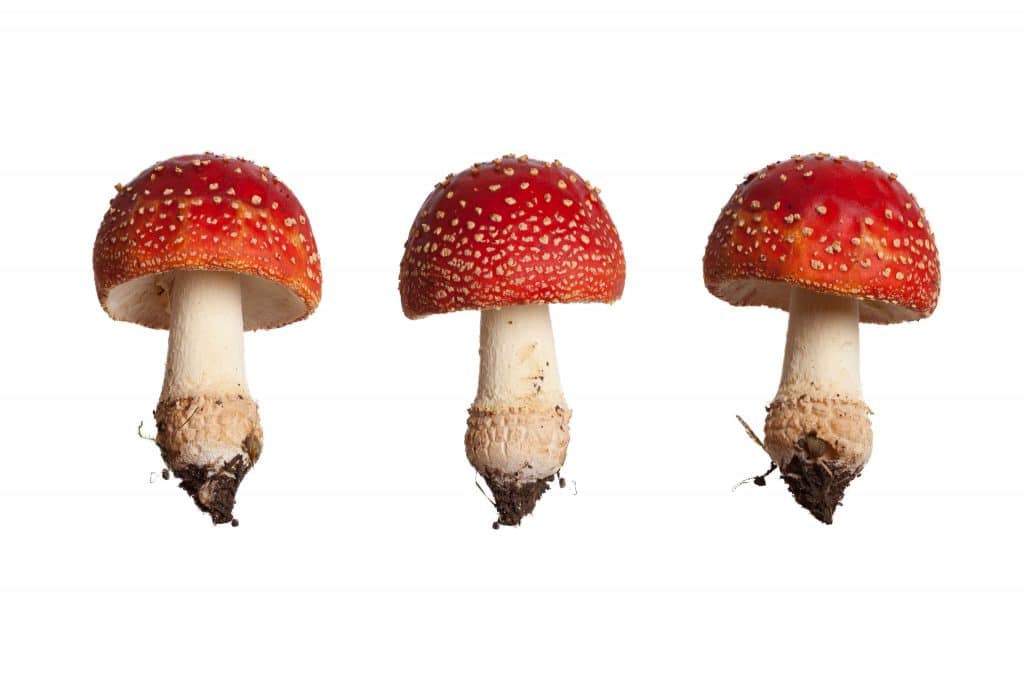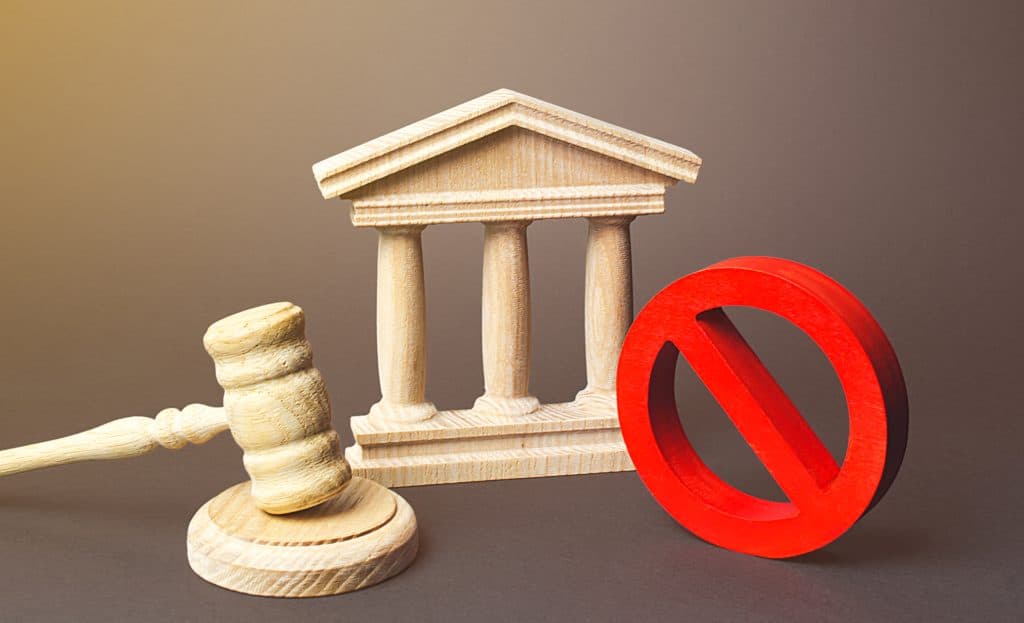It’s relatively common knowledge that magic mushrooms are illegal in the United States. What is not quite as well-known, is that the laws don’t apply to all magic mushrooms. Some species, like Amanita muscaria for example, have managed to skirt the attention of federal regulators and retain their legal status… and it’s under this premise that Chillum Hemp and Mushroom Dispensary operates.
To stay current on everything important happening in the industry, as well as gain access to deals on cannabis flowers, vapes, edibles, and much more (various cannabinoids to choose from), make sure to subscribe to The Cannadelics Weekly Newsletter. Enjoy responsibly!
What’s the news?
A hemp dispensary located in Florida recently started selling legal psychedelic mushroom products. The Tampa-based store was founded by Carlos Hermida in 2018, but the new products were just added to their inventory last month. These “magic” mushroom items include Amantia muscaria-based capsules, gummies, and powder – but no actual mushrooms yet.
What has really captured the attention of many, is Hermida’s use of the term “magic mushrooms”. When most people hear the phrase, they automatically think of psilocybin shrooms, which are illegal and listed as Schedule I narcotics on the DEA’s list of controlled substances. However, the ‘loophole’ in this situation boils down to the specific type of mushrooms being sold. Amanita muscaria mushrooms, although psychoactive, do NOT contain any psilocybin, and thus, are legal by default. Or in other words, they’re federally legal because they have flown under the radar for so long that the government never bothered to prohibit them. Why ban something that people are barely using anyway?
According to recent reports from other parts of North America, Hermida is not the only industry entrepreneur to catch on to this interesting legal ambiguity. A growing number of dispensaries in Canada have been openly selling all sorts of mushrooms and truffles, knowing that local law enforcement chooses not to target these businesses in lieu of going after opioid and amphetamine traffickers.
The amanita trend is likely to catch on in other parts of the United States too, and we’ll probably see more dispensaries and smartshops that will offer these products. If it can be done in Florida – where even recreational cannabis is still prohibited despite years of medical legalization – it can probably happen in most of the country as well, especially around the West coast (and Colorado).
Amantia muscaria explained
Amanita muscaria, frequently referred to as the fly agaric or fly amanita, is a member of the Basidiomycota family of fungi, of the genus Amanita. This mushroom species gets the common name from its ability to attract and kill flies (and possibly mosquitos).
Amanita muscaria mushrooms have round, often dome-shaped red caps with white spots and white gills. They are, without a doubt, one of the most recognizable of the toadstool mushroom species. You can spot Amanita muscaria mushrooms in the Mario franchise games, the Alice in Wonderland mushroom scene, and many other cartoons and animated games.
Fly agarics are native to the temperate and boreal regions of the Northern Hemisphere, particularly around Europe, North America, and Siberia/Northern Asia. It’s a highly adaptable mushrooms species, evidenced by the fact that it now grows all over the world and there are many different strains and variations of Amanita muscaria. They form symbiotic connections with numerous trees and are typically found growing under pine, oak, spruce, fir, birch, and cedar.

Although they have many features that make them easily discernible from other mushroom varieties, there are several known subspecies of Amanita muscaria, and some more potent/toxic than others. Additionally, new DNA fungi research has discovered that many of the mushroom types once believed to be muscarias are actually entirely different species, like the “peach-colored fly agaric”, which never lost its name even though it is not a fly agaric at all.
As mentioned above, Amanita muscaria mushrooms are psychoactive and they do produce hallucinations and altered states of consciousness, but not via the same mechanisms as the more popular psilocybin varieties. Other psychedelics like psilocybin mushrooms, ayahuasca/DMT, and mescaline, are all serotonergic, meaning they interact with serotonin receptors in our brains which greatly influences the high.
What a lot of people don’t understand about serotonin, is its profound effect on anxiety. The standard belief is that low levels of serotonin can produce anxious effects, but that’s not entirely accurate. Rather, a general imbalance of serotonin (either too little OR too much) can cause this. It can explain why some people get nervous and have bad trips when taking psychedelics – the effects on serotonin coupled with possible visual/auditory/sensory hallucinations can get a bit freaky.
In A. muscaria, the psychoactive ingredients are muscimol and ibotenic acid. Muscimol activates the major inhibitory neurotransmitter system, gamma amino butyric acid (GABA). As an inhibitory system, muscimol works by suppressing the activity of neurons in the brain. Ibotenic acid is a neurotoxin and agonist of glutamate receptors, specifically at both the N-methyl-D-aspartate, or NMDA, and trans-ACPD receptor sites. Neurotoxins interrupt communication between neurons across a synapse, changing the way the nervous system functions. Ibotenic acid is a secondary metabolite that converts to muscimol via decarboxylation.
As intense as “neurotoxin” sounds, people who use these mushrooms compare the feeling to being drunk, but with a trippier and more curious vibe to it. The muscimol in these mushrooms can produce feelings of euphoria, hallucinations, muscle jerks, drowsiness, sweating, pupil dilation, and increased body temperature. But because they are not serotonergic, it seems that anxiety and fear is less frequently associated with fly agarics (although this is not something that I can confirm myself).
Current legality and future implications
Unlike psilocybin mushrooms, fly agarics are federally legal. No loopholes, no equivocal legal texts, just plain legal; and this is simply because they haven’t received enough attention to warrant a need for amanita prohibition. Individual states could enact measures to restrict their usage, possession, and enterprise, or they can outright ban all of it – but the only state to do so at this point, is Louisiana.
But that doesn’t mean that other states won’t follow their lead. On the contrary, now that they’re getting more attention, some of the more conservative states like those in the South and Midwest might soon get their own amanita laws on the books.

However, it’s unlikely that the federal government will create any laws against amanita muscarias. They will eventually start implementing various regulations to ensure they are getting a cut from profits on these products (sales and excise taxes, expensive licensing for those who wish to sell them, zoning laws, etc.), but because the psychedelics industry is moving forward at such a rapid pace, it wouldn’t make much sense to start implementing new bans against old-world entheogens now.
Granted, the government does many things that seem completely illogical. But in this context, what I mean is that it would make them look bad, incompetent, and disconnected; the last thing they want right now as so many states are already boldly defying federal drug laws by allowing the sale of recreational cannabis.
Final thoughts
It may not seem like that big of news, but it’s certainly exciting… particularly for those of us who have been wanting to experiment with Amanita muscaria mushrooms. Knowing that they are starting to make an appearance in US retail is progressive, if not anything else, and a positive sign of what’s to come.
Thanks for stopping by!! Welcome to Cannadelics.com; an independent news platform where we work hard religiously to bring you the best in cannabis and psychedelics reporting. Hang out with us frequently to stay aware of all updates, and subscribe to our Cannadelics Weekly Newsletter, so you’re always first to get the news.
The post U.S. Dispensary Selling Legal “Magic” Mushrooms – What This Means for the Future appeared first on Cannadelics.
Via https://cannadelics.com/2022/10/18/u-s-dispensary-selling-amanita-muscaria-mushrooms/
source https://rosalinaklerkx.weebly.com/blog/us-dispensary-selling-legal-magic-mushrooms-what-this-means-for-the-future
No comments:
Post a Comment